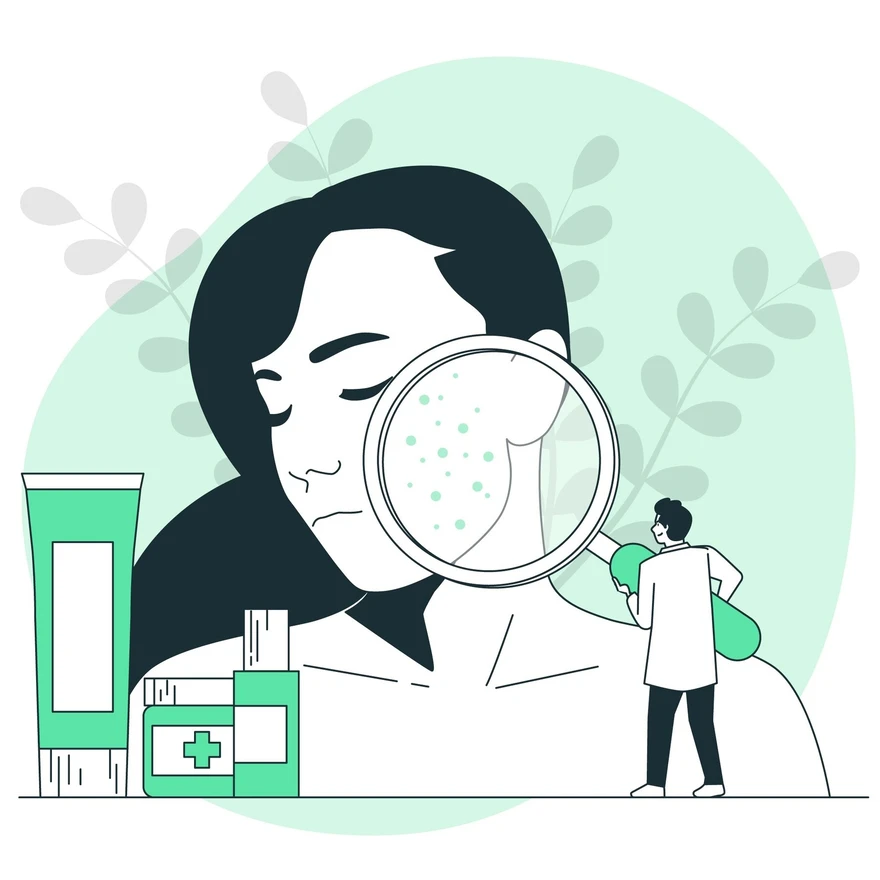Preventive Healthcare
Living with Scleroderma: Understanding the Symptoms and Treatment Options
52 Views
0

Introduction
What is scleroderma?
Scleroderma is a rare autoimmune disease in which the body's immune system mistakenly attacks its own tissues, causing an overproduction of collagen protein. Excess collagen makes the skin abnormally thick and fibrous and can affect other body tissues.
Scleroderma is a chronic condition that may need lifelong management. If it affects an organ tissue, it can lead to life-threatening complications. Therefore, it's crucial to seek medical help if you experience symptoms such as joint pain, stiffness, or unusually thickened skin around your fingers and toes.
What are the types of scleroderma?
Health practitioners generally classify two main scleroderma types:
- Localised Scleroderma: This type usually affects only one part of your body (usually the skin). It causes waxy, thick patches or streaks to appear on your skin.
- Systemic Sclerosis: This variant can impact other organs in addition to your skin. It may involve parts of your respiratory system (organs that breathe and smell) and digestive system (organs that process food and drink). This type has three sub-types—diffuse, limited, and sine sclerosis.
Understanding the scleroderma types and the one you are dealing with can help you manage and treat it effectively.
What are scleroderma symptoms?
Scleroderma symptoms can vary widely. Some people may not experience any symptoms initially, while others might notice thickened, waxy patches or streaks on the skin. Other common symptoms include joint pain, morning stiffness, extreme fatigue, and unexplained weight loss.
Let's delve deeper into the specific symptoms of scleroderma for both localised and systemic variants:
Localised Scleroderma Symptoms
Individuals with localised scleroderma primarily experience skin thickening. The affected skin can appear in patches on the chest, around the stomach, limbs, hands and fingers, feet, and toes. It's rare for localised scleroderma to affect internal organs.
Systemic Sclerosis Symptoms
Systemic sclerosis can cause a wide array of symptoms. Thickened skin usually appears on your fingers or toes before spreading to the your body's centre. If you have Raynaud's syndrome (a condition often associated with scleroderma), the skin of the affected fingers and toes may change colour when exposed to cold.
Alongside this, systemic sclerosis can cause many symptoms related to organs and tissues, such as numbness and swelling in the muscles, joint stiffness and loss of mobility, coughing and shortness of breath in the lungs, swallowing difficulty, heartburn, constipation or diarrhoea related to the digestive tract, abnormal heartbeat or fluid build-up around the heart, affecting cardiovascular health, kidney failure which can be life-threatening and sexual dysfunction.
What causes scleroderma?
The exact causes of scleroderma remain unknown. Some studies have found that it can run in families, but it’s not definitively proven to be a genetic disorder.
What are the scleroderma risk factors?
Certain groups are at a higher risk of developing scleroderma. People assigned female at birth (AFAB) are four times more likely to develop it than people assigned male at birth (AMAB). The condition is also more common in people between the ages of 30 and 50 and in black people, who often experience more severe scleroderma symptoms.
What complications can scleroderma cause?
Scleroderma lead to various complication. This condition can cause Raynaud's syndrome, which affects the small blood vessels in your fingers and toes, causing them to constrict more than usual in response to cold temperatures or stress. It often leads to colour changes in your fingers and toes due to reduced blood flow.
Another complication is known as Sjögren's syndrome, which causes decreased moisture production by certain glands, usually the salivary glands, resulting in dry mouth and dry glands in the eyes.
In more severe cases where multiple organs are affected (systemic sclerosis), scleroderma can lead to life-threatening complications, including:
- Kidney failure
- Pulmonary hypertension
- Pulmonary fibrosis
- Cardiovascular disease
- Congestive heart failure
- A weakened immune system
- Gastrointestinal diseases
- Cancer
How is scleroderma diagnosed?
A healthcare provider can diagnose scleroderma through a physical examination and some tests. You may need to visit a rheumatologist, a healthcare provider who specializes in treating autoimmune disorders. During your consultation, be open with your doctor about any symptoms you're experiencing, when you first noticed them, and if anything seems to make them worse. This information will help your healthcare provider create a comprehensive picture of your condition.
What tests are used to diagnose scleroderma?
Your healthcare provider may need to employ a series of diagnostic tests to confirm scleroderma. These could include:
- Blood tests: To evaluate how well your immune system is functioning
- Pulmonary function tests: To ascertain if your lungs or respiratory system are affected
- Biopsy: A procedure where a small sample of your skin or other affected tissue is removed for lab testing
- Endoscopy: A procedure where a small camera attached to a long, thin tube will be used to examine your throat or stomach to check If you have gastrointestinal (GI) symptoms.
Additionally, imaging tests like an electrocardiogram (ECG), echocardiogram (Echo), chest X-ray, or computed tomography (CT) scan might be necessary to get a clear picture of the impact of scleroderma on your body.
How is scleroderma treated?
While there isn't a cure for scleroderma, numerous scleroderma treatment options can manage scleroderma symptoms and reduce their impact on your daily routine.
These treatments could include:
- Skin treatments: Creams and moisturisers could be used to prevent dry skin.
- Immunosuppressants: These stop the immune system from damaging healthy cells and tissues.
- Medicines for specific symptoms: In case of high blood pressure, breathing difficulties, kidney failure or gastrointestinal disorders, respective medications can be administered.
- Physical therapy: This is beneficial for improving physical mobility.
- Light therapy (phototherapy): This uses UV light to treat thickened skin.
- Stem cell transplants: Severe cases might require a stem cell transplant to replace damaged blood cells with healthy donor cells.
Conclusion
Living with scleroderma can indeed be challenging. But with the right knowledge and medical care, managing this condition can become less daunting. An understanding of scleroderma causes, scleroderma symptoms, and scleroderma types can assist you in recognising the potential complications early and seeking timely scleroderma treatment. Regular check-ups and tests are critical to managing scleroderma. With Metropolis Labs, you have access to expert diagnostic services right at your doorstep. From at-home sample collections by trained professionals to advanced diagnostic tests performed in state-of-the-art labs, Metropolis is committed to delivering accurate results with personalised care
 Home Visit
Home Visit Upload
Upload









1720012827.webp)



1701259759.webp)









 WhatsApp
WhatsApp